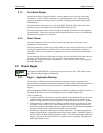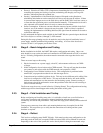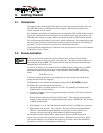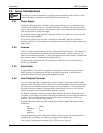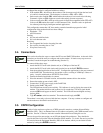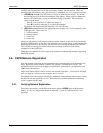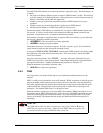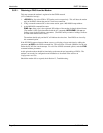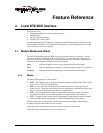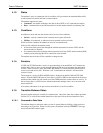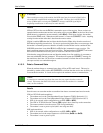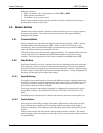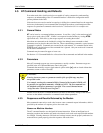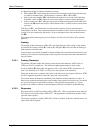
2110212 Rev 1.0 Page 17
Feature Reference
4. Local DTE/DCE Interface
This section covers:
• Important terminology on modem modes and states
• Modem buffers
• The AT Command Interface
• The RS-232C control signals
A sound understanding of the interface is important to smooth communication with devices that
may not handle the modem’s AT commands and responses as well as intelligent local hosts that
can exercise full control of the modem.
4.1. Modem Modes and States
The DART 300 modem supports CDPD only but with several packet service modes. Various
states and conditions within each mode are also possible. The commands and registers used
depend on the modem’s operating mode, state of the modem, and its condition. Together these
determine how the modem will behave in any given situation.
Mode indicates the packet service or local connection used by the modem.
State indicates whether data is treated as a modem command or data for transmission.
Condition indicates whether the modem has an active connection to the network.
4.1.1. Modes
The DART 300 supports all of these modes.
• SLIP – The simplest mode of operation, where the local host system provides TCP or UDP
stack services. This is the factory default.
• PPP – A more robust form of SLIP connection where the local host again provides the
protocol stack. This protocol allows the local host and modem to negotiate the features they
have in common to establish the most effective communication.
• UDP – User Datagram Protocol stack is implemented in the modem where serial data is
assembled into packets, or received data packets are disassembled for the local host.
• TCP – Transport Control Protocol stack is implemented in the modem for packet assembly
and disassembly and the management of connection handshaking with the remote.
UDP and TCP modes are also known as PAD modes because the modem’s internal Packet
Assembler / Disassembler (PAD) services are active.
The mode can be changed whenever the modem does not have an open session.
A full discussion of the protocols is covered in Section 6.



